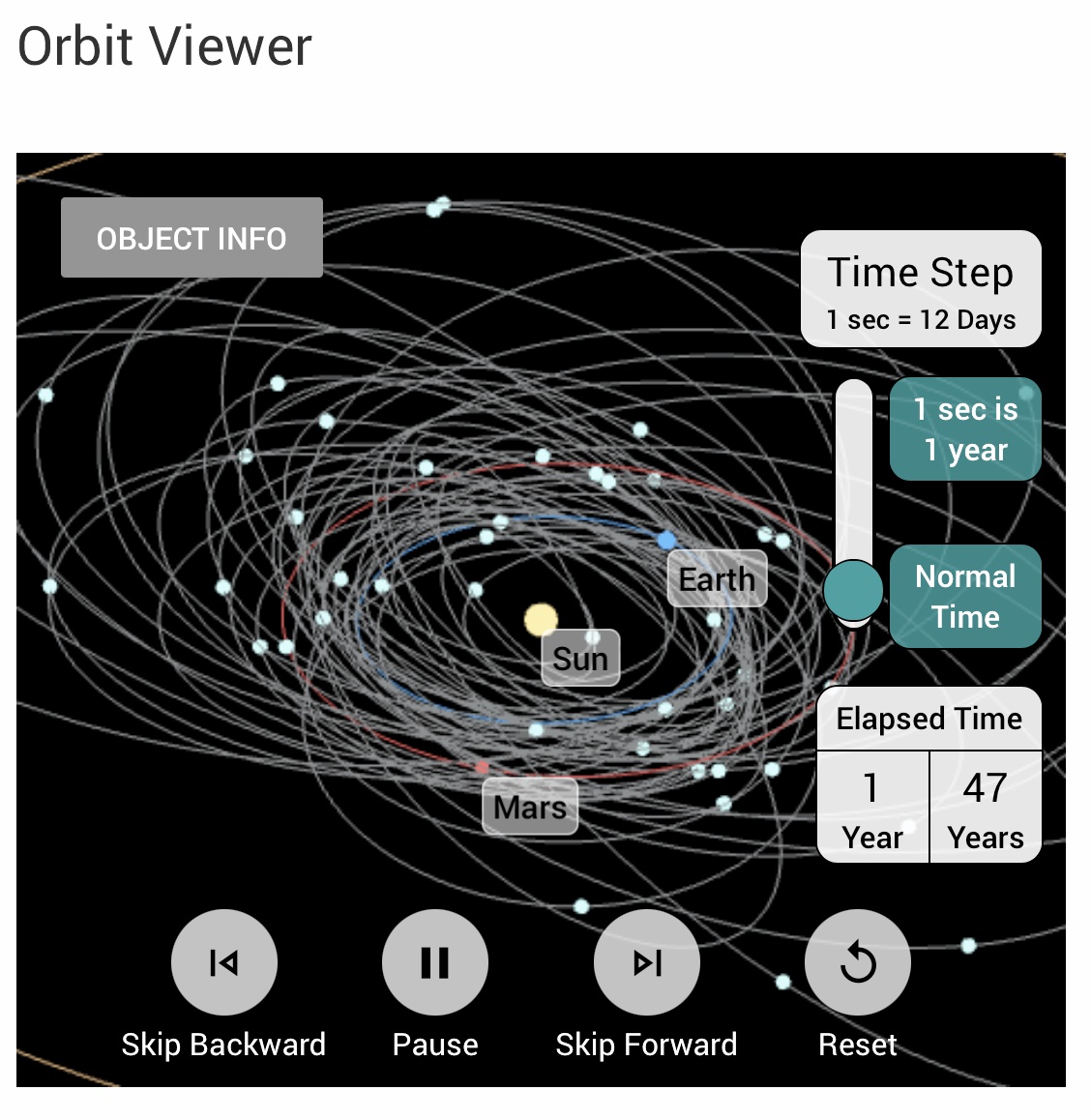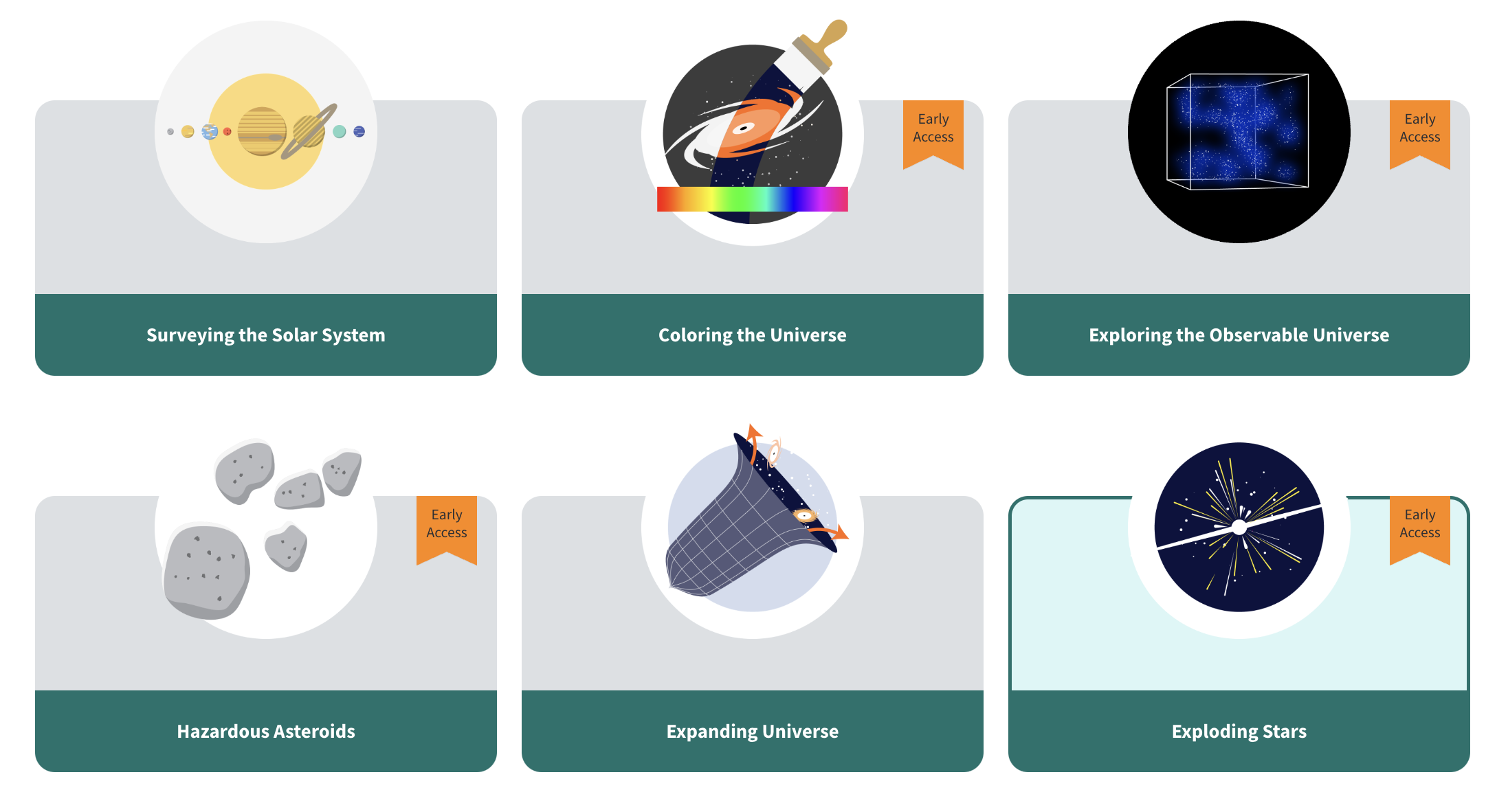Implementing Data-Driven Investigations from Rubin Observatory
Ardis Herrold Vera C. Rubin Observatory/NSF's NOIRLab
Edward Prather University of Arizona
Welcome to the AAS Education Blog! This post, featuring a prior winner of the AAS Education & Professional Development Mini-Grant, is part of a biweekly series of blog posts from astronomers and educators in the extended AAS community, curated by the AAS Education Committee. Subscribe here to receive future posts directly into your inbox; also follow us on Twitter. We welcome feedback and topic suggestions, as well as guest article submissions! — AAS Education Blog Editors
At the 241st meeting of the AAS, Vera C. Rubin Observatory presented a workshop, “Engaging Students with New Data-Driven Astronomy Investigations,” that gave educators an opportunity to learn about two new online astronomy investigations. The workshop was designed to provide these educators with an authentic experience of working collaboratively with their peers to gain experience with the interactive tools, data analysis tasks, and science practices afforded by these investigations. The workshop also focused on unpacking specific implementation strategies that have been shown to enhance the success of bringing these investigations into online synchronous, asynchronous, and in-person classroom settings. Additionally, educators were engaged in reflecting on how these investigations might be incorporated into their unique education context/classroom. The article below expands on the important design features of these new online investigations and accompanying support materials and provides information on professional development and how to access these investigations.
Vera C. Rubin Observatory (formerly known as the Large Synoptic Survey Telescope, LSST) is a ground-based US observatory projected to begin operations in early 2025. From its location in the Andes Mountains, the telescope will conduct a ten-year survey of the sky using the most sensitive camera ever built for astrophysics, allowing for very deep observations of the universe. Every three to four nights, the entire sky will be imaged allowing for the discovery of millions of objects that change in position or brightness. These combined capabilities will result in an enormous amount of data being made available over the next decade.
Rubin Observatory is the first major US publicly-funded observatory to acknowledge the importance of education and outreach by establishing Education and Public Outreach (EPO) as one of the four major subsystems of the Observatory. The planning for classroom educational products began in earnest in 2017, well before the telescope was to be completed. This has allowed time to design data-driven online investigations, develop a community of educators, and conduct classroom testing, so investigations and support materials would be classroom-ready before the arrival of the telescope’s first data, rather than starting education efforts after data has arrived.
To date, Rubin EPO has produced six freely available classroom investigations that align with topics commonly taught in an introductory astronomy course or unit. The investigations are designed for novice learners from advanced middle school through the introductory college level and cover topics ranging from Hubble's Law to hazardous asteroids.
Investigations incorporate a unique combination of data representations, easy-to-use interactive tools, and analysis tasks designed to guide learners’ exploration of contemporary astronomy data.

Analysis tasks model similar processes used by astronomers, and offer students the opportunity to develop explanatory models used to interpret, evaluate, and make predictions about the physical system they are studying. Since science is a collaborative process, all investigations are designed for active learning that fosters discussion, critical thinking, and self-reflection. Guided practice tasks and questions help improve students’ data fluency and their sense of self-efficacy, so that all students can experience success in doing science.

Questions in each investigation create opportunities for learners to make connections between science practices and the practices of their daily life. These questions help students to discover relevance between what they are learning and their beliefs, identities, and lived experiences, which can increase students’ interest, level of engagement and agency in learning. A question from the Coloring the Universe investigation asks: “As you have just learned, chromatic ordering of colors is used to communicate information about the wavelengths of light in the image. Give an example of how color(s) in your culture is used to communicate a message. What is the color, and what message does it communicate?”

Each investigation also comes with a warm-up activity, a teacher guide, some formative and summative assessments (think-pair-share, pre/post, and open-ended), and specific Next Generation Science Standards support materials.
All investigations have undergone iterative classroom testing by approximately 5,000 teachers and students worldwide. This extensive testing has demonstrated that these investigations can be effective with the target population of students in both asynchronous and synchronous online learning contexts as well as in-person classrooms.
In early June 2023, the new official website of the observatory was launched. Six investigations are currently available on the website and ready for classroom use. Two of these investigations have been finalized, including fully translating all materials into Spanish. The remaining four “Early Access” investigations can also be used now, but new finalized versions will be available in the future.

Rubin EPO is continuing to develop new investigations, and will continue to revise all educational materials as needed. Additionally, the EPO team is dedicated to providing educational and technical support to the astronomy educator community for the next ten years.
You can interact with other educators and Rubin staff regarding questions and use of these investigations by joining the Rubin Observatory Educators Community of Practice, either via Facebook or a private email discussion group.
Rubin EPO can also offer your group online and in-person professional development workshops. These workshops may cover navigating and using investigations, or help with designing learning sequences and implementation. In addition, there are recorded webinars that explore the science and details of each investigation in the Professional Development pages. Visit Rubin Observatory Education for more details. For other questions, please contact [email protected]

